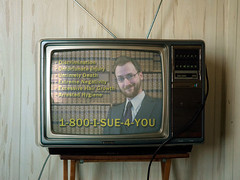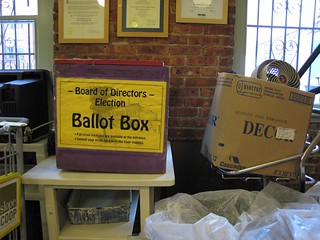
Mitchell v. The Printing Factory Lofts Inc., Beaverbrook Homes Inc. and Anthony Lanni 2013 ONSC 5603 (CanLII)
Decision Date: September 5, 2013
http://canlii.ca/t/g0d7jIn February 2007 Ms. Mitchell entered into a written agreement to purchase a unit in The Printing Factory Lofts on Carlaw Ave., with the understanding that her unit would have an exterior door onto the street. After construction began Toronto Hydro informed the developer that duct banks were to be placed in an area that prevented the proposed exterior door. In November 2009, after Ms. Mitchell complained about the exterior door loss, she was given three options: Accept the unit as is; move to another available unit of the same size with an exterior door for the same price; or mutual release from the written agreement. None of these options was acceptable. Ms. Mitchell took possession of the unit in January 2010 and closed the sale “under protest” in June 2010. She submits that the condominium corporation, the developer, and Mr. Lanni, an employee of the developer, are liable to her regarding removal of the door.
In this action Beaverbrook Homes and Mr. Lanni moved for a summary judgment to dismiss the claims against them, on the grounds that they were not privy to Ms. Mitchell’s agreement with the Printing Factory Lofts. The judge found no evidence that Beaverbrook or Lanni were liable to Ms. Mitchell as agents of the Printing Factory Lofts. He agreed to grant the motion and ordered that Ms. Mitchell pay $5000 in costs to Beaverbrook Homes and Mr. Lanni. (The parties had agreed previously that the successful party in the motion would be entitled to costs in that amount.)
Comment: The door is not closed on Ms. Mitchell’s action against the Printing Factory Lofts, which includes claims of deficient work and Ontario Building Code issues.
Dhillon Group v. Peel Standard Condominium Corporation No. 919, 2226828 Ontario Inc. and Rajiv Kumar Johri 2013 ONSC 5719 (CanLII)
Decision Date: September 16, 2013
http://canlii.ca/t/g0lhtIn 2010 Mr. Dhillon purchased a unit in PSCC 919 for use as an accounting office, with the understanding that the condominium’s Declaration contained a restrictive covenant prohibiting any other unit from also operating as an accounting office. Shortly after, Mr. Johri (director of 2226828 Ontario) renovated his dry cleaning business in PSCC 919 and began preparing tax returns there, as well as offering tax and financial planning (and dry cleaning). PSCC 919’s Declaration states that it is not the responsibility of the Corporation to enforce restrictive covenants, and that PSCC shall not be added as a defendant for failing to enforce a restrictive covenant.
The issues for determination were 1) whether Johri’s use of his unit constitutes an “Accounting Office”; and 2) whether the portion of PSCC 919’s Declaration denying responsibility for enforcing restrictive covenants was contrary to the
Condominium Act and therefore unenforceable. Judge Firestone found that 1) Johri’s activities in his unit did indeed come under the scope of running an “Accounting Office” and that he must cease or cease permitting the use of his unit for any services carried out in an accounting office. 2) The portion of PSCC 919’s Declaration under dispute is inconsistent with section 17(3) of the
Condominium Act and must be amended.
Comment: I wonder how many other condominium Declarations contain unenforceable provisions.
Diamantopoulos v. Metropolitan Toronto Condominium Corp. No. 594, 2013 ONSC 5988 (CanLII)
Decision Date: September 23, 2013
http://canlii.ca/t/g0nkc
Judge Corbett found that the issues brought by the applicants were too insignificant to be litigated or mediated and invoked the Latin maxim:
De minimis non curat lex.
These issues included (judge’s comments in parenthesis):
1. Warnings made by condominium management regarding the applicants’ conduct in the exercise room. (No outstanding conflict.)
2. Recent conflict between the applicants and their upstairs neighbours. (Condominium management behaved reasonably in directing the applicants not to contact their neighbours directly.)
3. The applicants were accused of behaving rudely towards security personnel and have been asked to avoid dealing with them except in the case of a genuine emergency. (“This should solve the problem with a minimum of fuss and bother.”)
4. The management of TCC 594 has asked the applicants to use the management office when communicating with members of the Board. (“Sound policy.”)
5. Management blamed the applicants for damage to the door of their neighbours’ unit and asked them to pay for repairs. (No issue here since the request was later dropped.)
The judge dismissed the application. The respondents had asked for partial indemnity costs of $5800. However since the respondents argued that the matters should come to court rather than to mediation (and this approach “fanned the flames of conflict”) they are entitled to recover only $2500.
Comment: Due to Judge Corbett’s unfortunate extended medical absence, the parties had to wait nearly a year for this decision.
 Stanley Gordon v. York Region Condominium Corporation No. 818, Ed Rotman, Ahsan Zaiyouna, Harold Davis, Eugene Katz & Manfred Kapp
Stanley Gordon v. York Region Condominium Corporation No. 818, Ed Rotman, Ahsan Zaiyouna, Harold Davis, Eugene Katz & Manfred Kapp

















